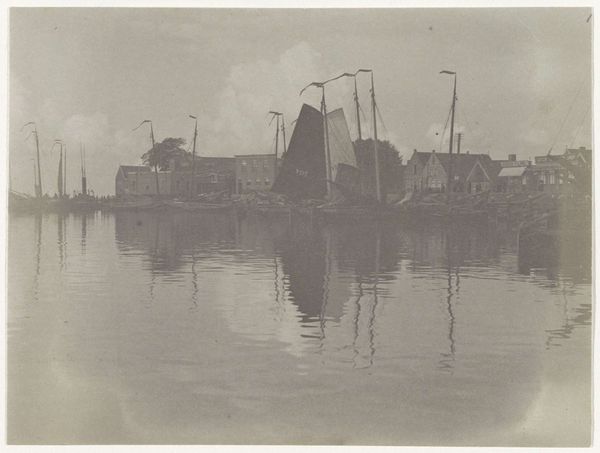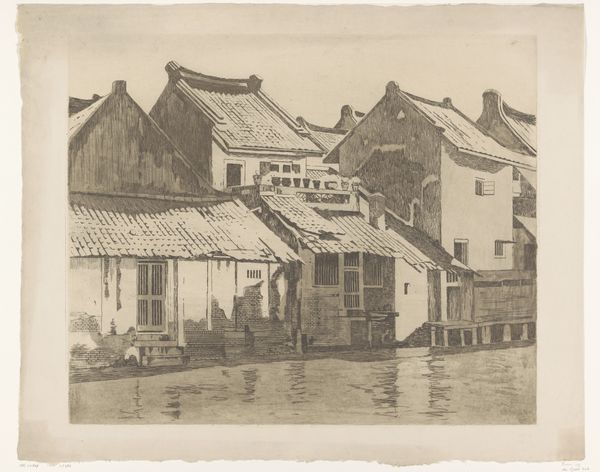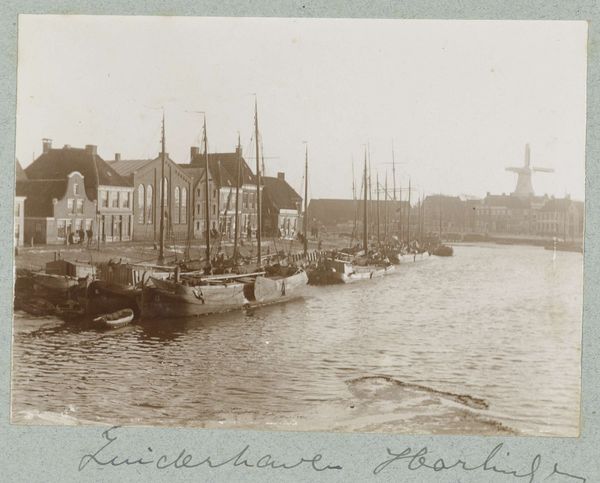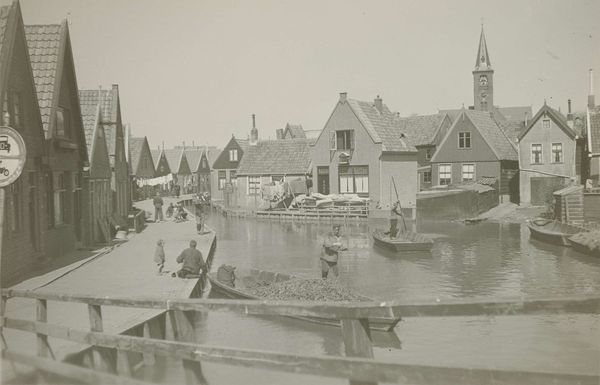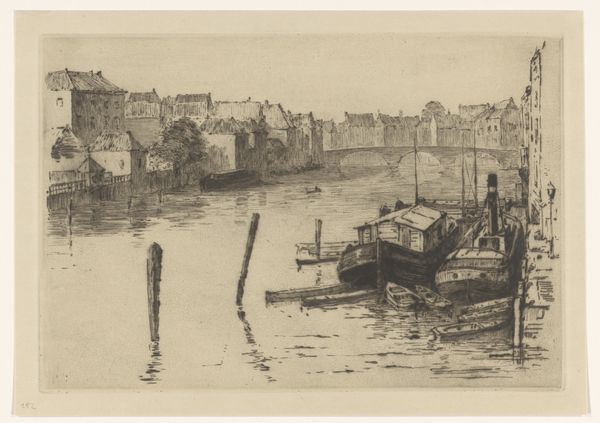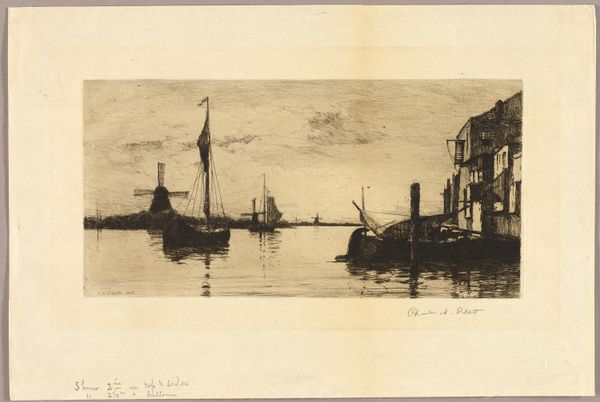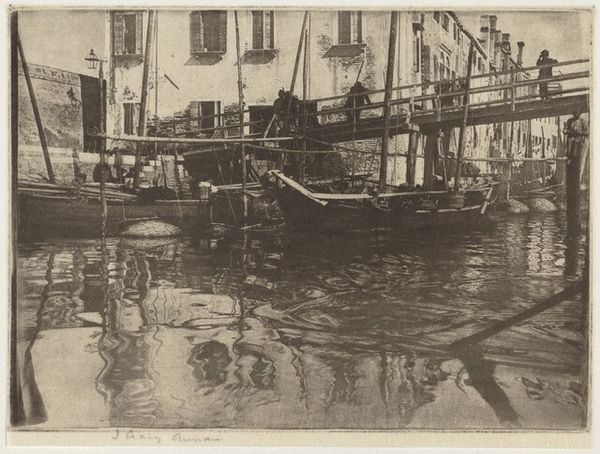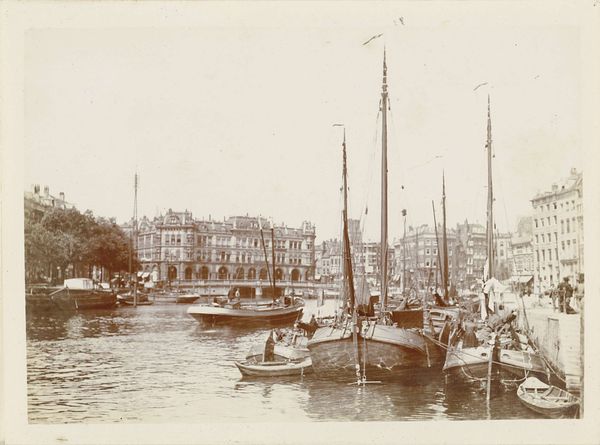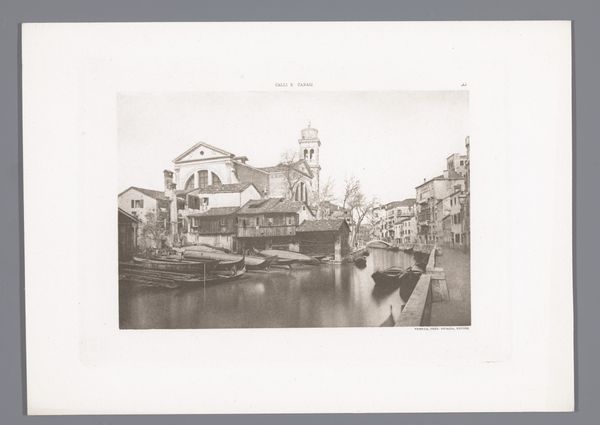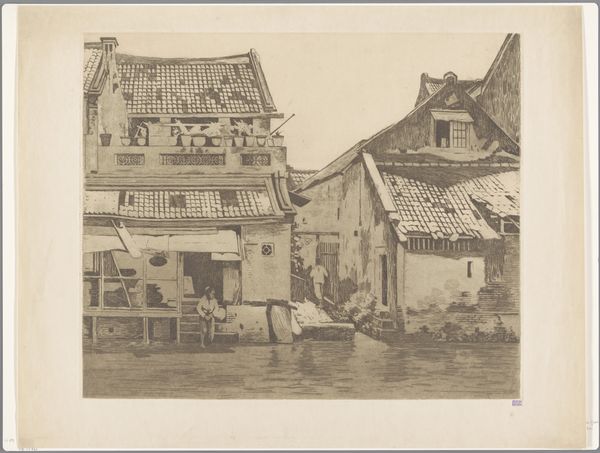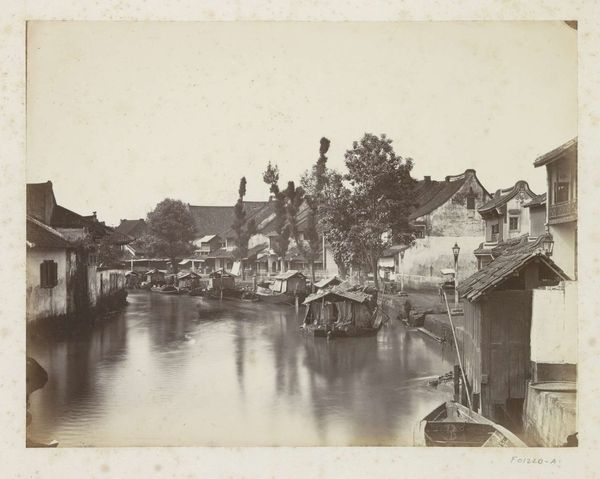
print, etching
#
dutch-golden-age
# print
#
etching
#
landscape
#
cityscape
#
realism
Dimensions: plate: 27.31 × 42.23 cm (10 3/4 × 16 5/8 in.) sheet: 38.89 × 51.91 cm (15 5/16 × 20 7/16 in.)
Copyright: National Gallery of Art: CC0 1.0
Curator: The sepia tones lend such an immediate mood; it feels almost photographic but rendered in a dreamy haze, like memory itself. Editor: Indeed. We're looking at "Dordrecht (Old Warehouse)," an etching created in 1885 by the American artist Charles A. Platt. Notice how the artist uses the etching technique to capture both the details of the cityscape and the subtle reflections on the water. Curator: Oh, the water! It’s less a depiction of water and more like looking into another world, everything softened and hinted at. There's a hazy mystery to it. What style is this, exactly? Editor: Well, you can definitely identify elements characteristic of Realism in Platt’s direct and unidealized depiction of the cityscape. The Dutch Golden Age aesthetic comes across in the landscape tradition and also the cityscape subject matter. Curator: So, both looking at things how they are, but with this classic dreamy kind of… respect, almost. And how did Platt render such precision in the architecture using etching? The building's forms, captured by mere lines! Editor: Through meticulous application of the etching process, of course, controlling line weight and density to suggest form and volume. Notice also how he manipulates the tonal range, using areas of concentrated lines to denote shadows. Curator: Almost as if you could reconstruct the entire three-dimensional town only knowing that its shadows existed. And I notice Platt frames everything through the masts and rigging of the ship closest to us, a very human point of view in the composition, but is it all so somber? Editor: Platt really emphasizes the intricate details of the boats, doesn’t he? It almost gives the feeling that Dordrecht’s essence and personality have merged over time with the river. It’s less somber, I think, and more about permanence. Curator: Perhaps you’re right; these visual echoes offer us glimpses into a tranquil moment from centuries ago. This artwork bridges the divide between capturing reality and weaving a romantic narrative. Editor: I agree, offering both a slice of history and a whisper of artistic interpretation.
Comments
No comments
Be the first to comment and join the conversation on the ultimate creative platform.
